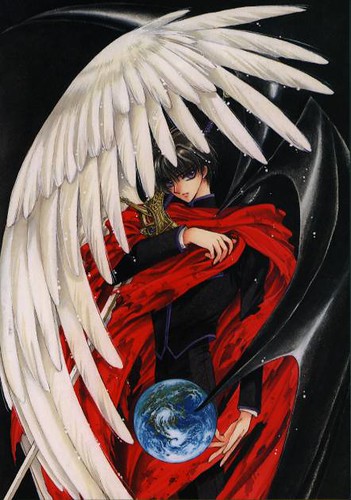
Because I was an art student that went an arts high school, where japanese anime was celebrated among my peers, but never by my teachers. As an art student we're inclined to fall in love with the hand drawn characters, who always look oddly perfect but have far from perfect personalities. Due to my intrigue of the artwork, I rarely found the stories involving the hand drawn characters to be weird, but neither did I find them to be suitable for kids. My parents and perhaps adults their age constantly view cartoons and anime to be made for kids, but in fact anime is too cruel and has really slow but intricate plotlines that would bored children to death.
When Sturken and Cartwright was talking about Akira and Astro Boy as a postmodernist text, I begin to realize that all the anime I watched in my high school years were also quite postmodern. For example, Bubblegum Crisis is about four unlikely human girls get recruited by a mystery scientist, who gives them these high technological suits that enhances their reflexes and vision. These four warriors spend most of their time killing out alien robots that seek to destory Tokyo. Through the postmodernist lense, the anime rarely shows Tokyo with crowds of people, actually the whole anime makes you think that the only people living in Tokyo might just be the four girls and the one scientist. Tokyo as a backdrop is not glimmering with lights and busy atmosphere, you always see factories and large vacant buildings. The conclusion of the anime is about the four warriors defending Tokyo from an alien invasion, in which they're miniscule technology looks horrible whimpy compared to the alien robots. There's one phrase in the anime that gets repeated quite often is: "Just quit and accept your death. Humans are too weak to create their fates." to which you always hear the response: "At least we try. That's what makes humans different from robots, we like to create our own fate whether it's good or not." If I read this like Sturken and Cartwright has instructed, the airy Tokyo represents the feeling that the Japanese felt after the bombing of Hiroshima; the four warriors' response to the alien attacks are the Japanese's struggle to retrieve their original life style despite being attacked. Although children would find Bubblegum Crisis to be the female version of Power Rangers, where there's cool robots and crazy fight scenes, but these futuristic anime always have a very melancholy feeling to them. I rarely watched them because when the creators of these anime constantly make the storyline quite sporadic and the characters to be the outlier's of the hegemonic society. These qualities make a lot of sense viewed in the postmodern lense, the creators are trying to grasp at the horrid reaction after the bombing of Hiroshima where their country dissappeared in an instant and people's family lines were diminished without a trace of body part or ashes to remember them by.

Japanese anime that don't involve futuristic settings also follow the same rhythm, but instead of using technology as the unseen anatgonist, anime artists use magic. In X, Kamui, the protagonist, has to make a decision between destroying the world and having it renew again back to when humans have not corrupted the order of nature or maintain the current world. There's always these battles torn between complete destruction or simply the struggle to continue living.
In truth, not only is anime not suitable for kids, I don't think Japanese anime industry market their products to children. Children that have not experienced these horrible events or even understand them through books would find anime characters to be boring or simply weird, but their weird for a reason.
No comments:
Post a Comment